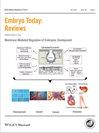下载PDF
{"title":"妊娠期静脉血栓形成的非临床因素","authors":"Evi Struble, Wafa Harrouk, Albert DeFelice, Belay Tesfamariam","doi":"10.1002/bdrc.21111","DOIUrl":null,"url":null,"abstract":"<p>Pregnancy is a hypercoagulable state which carries an excess risk of maternal venous thrombosis. Endothelial injury, alterations in blood flow and activation of the coagulation pathway are proposed to contribute to the hypercoagulability. The risk for thrombosis may be accentuated by certain drugs and device implants that directly or indirectly affect the coagulation pathway. To help ensure that these interventions do not result in adverse maternal or fetal outcomes during pregnancy, gravid experimental animals can be exposed to such treatments at various stages of gestation and over a dosage range that would identify hazards and inform risk assessment. Circulating soluble biomarkers can also be evaluated for enhancing the assessment of any increased risk of venous thrombosis during pregnancy. In addition to traditional <i>in vivo</i> animal testing, efforts are under way to incorporate reliable non-animal methods in the assessment of embryofetal toxicity and thrombogenic effects. This review summarizes hemostatic balance during pregnancy in animal species, embryofetal development, biomarkers of venous thrombosis, and alterations caused by drug-induced venous thrombosis. Birth Defects Research (Part C) 105:190–200, 2015. © 2015 Wiley Periodicals, Inc.</p>","PeriodicalId":55352,"journal":{"name":"Birth Defects Research Part C-Embryo Today-Reviews","volume":"105 3","pages":"190-200"},"PeriodicalIF":0.0000,"publicationDate":"2015-09-25","publicationTypes":"Journal Article","fieldsOfStudy":null,"isOpenAccess":false,"openAccessPdf":"https://sci-hub-pdf.com/10.1002/bdrc.21111","citationCount":"6","resultStr":"{\"title\":\"Nonclinical aspects of venous thrombosis in pregnancy\",\"authors\":\"Evi Struble, Wafa Harrouk, Albert DeFelice, Belay Tesfamariam\",\"doi\":\"10.1002/bdrc.21111\",\"DOIUrl\":null,\"url\":null,\"abstract\":\"<p>Pregnancy is a hypercoagulable state which carries an excess risk of maternal venous thrombosis. Endothelial injury, alterations in blood flow and activation of the coagulation pathway are proposed to contribute to the hypercoagulability. The risk for thrombosis may be accentuated by certain drugs and device implants that directly or indirectly affect the coagulation pathway. To help ensure that these interventions do not result in adverse maternal or fetal outcomes during pregnancy, gravid experimental animals can be exposed to such treatments at various stages of gestation and over a dosage range that would identify hazards and inform risk assessment. Circulating soluble biomarkers can also be evaluated for enhancing the assessment of any increased risk of venous thrombosis during pregnancy. In addition to traditional <i>in vivo</i> animal testing, efforts are under way to incorporate reliable non-animal methods in the assessment of embryofetal toxicity and thrombogenic effects. This review summarizes hemostatic balance during pregnancy in animal species, embryofetal development, biomarkers of venous thrombosis, and alterations caused by drug-induced venous thrombosis. Birth Defects Research (Part C) 105:190–200, 2015. © 2015 Wiley Periodicals, Inc.</p>\",\"PeriodicalId\":55352,\"journal\":{\"name\":\"Birth Defects Research Part C-Embryo Today-Reviews\",\"volume\":\"105 3\",\"pages\":\"190-200\"},\"PeriodicalIF\":0.0000,\"publicationDate\":\"2015-09-25\",\"publicationTypes\":\"Journal Article\",\"fieldsOfStudy\":null,\"isOpenAccess\":false,\"openAccessPdf\":\"https://sci-hub-pdf.com/10.1002/bdrc.21111\",\"citationCount\":\"6\",\"resultStr\":null,\"platform\":\"Semanticscholar\",\"paperid\":null,\"PeriodicalName\":\"Birth Defects Research Part C-Embryo Today-Reviews\",\"FirstCategoryId\":\"1085\",\"ListUrlMain\":\"https://onlinelibrary.wiley.com/doi/10.1002/bdrc.21111\",\"RegionNum\":0,\"RegionCategory\":null,\"ArticlePicture\":[],\"TitleCN\":null,\"AbstractTextCN\":null,\"PMCID\":null,\"EPubDate\":\"\",\"PubModel\":\"\",\"JCR\":\"Q\",\"JCRName\":\"Medicine\",\"Score\":null,\"Total\":0}","platform":"Semanticscholar","paperid":null,"PeriodicalName":"Birth Defects Research Part C-Embryo Today-Reviews","FirstCategoryId":"1085","ListUrlMain":"https://onlinelibrary.wiley.com/doi/10.1002/bdrc.21111","RegionNum":0,"RegionCategory":null,"ArticlePicture":[],"TitleCN":null,"AbstractTextCN":null,"PMCID":null,"EPubDate":"","PubModel":"","JCR":"Q","JCRName":"Medicine","Score":null,"Total":0}
引用次数: 6
引用
批量引用



 求助内容:
求助内容: 应助结果提醒方式:
应助结果提醒方式:


